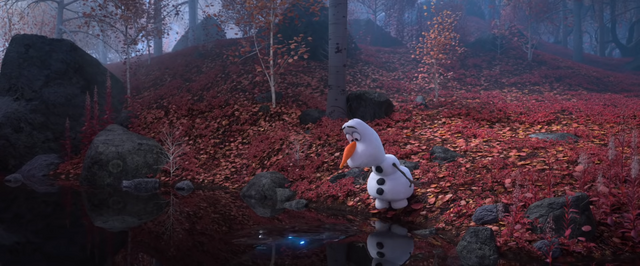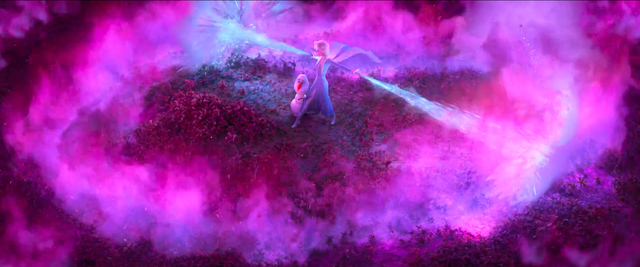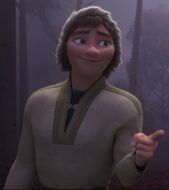Banned and Extinct Pokémon
https://asateriale.blogspot.com/2017/08/
Domestic and Worldwide Pokémon
https://asateriale.blogspot.com/2017/09/
North American, South American, African, and European Pokémon
https://asateriale.blogspot.com/2017/10/
Asian Pokémon
https://asateriale.blogspot.com/2017/11/asian-pokemon.html
Australian Pokémon
https://asateriale.blogspot.com/2017/11/australian-pokemon.html
Antarctic Pokémon
https://asateriale.blogspot.com/2017/11/antarctic-pokemon.html
If all of that is too tedious for you, take your time and read this list, if you prefer. I included all your favorites.
Bulbasaur line- Extinct; Lived in South America, Africa, and Asia during the Permian and Triassic Periods.
Charmander line- Rocky Mountains.
Squirtle line- Worldwide; Lakes, ponds, rivers, and beaches.
Caterpie line- Worldwide; Forests and jungles.
Weedle line- Worldwide; Forests and woodlands.
Pidgey line- Worldwide; Forests and fields.
Rattata and Raticate- Worldwide; Fields, plains, savannahs, and urban areas.Spearow and Fearow- Worldwide; Spearow live in barren wastelands, fields, and rocky areas, while Fearow live in rock spires near canyons, wastelands, and tall trees.
Ekans and Arbok- Africa; Savannahs and plains.
Pichu line- Africa; Forests and areas with electrical activity.
Sandshrew and Sandslash- Sub-Saharan Africa; Caves, grasslands, and deserts.
Nidoran (female) line- Africa: Savannahs and fields.
Nidoran (male) line- Africa: Savannahs and fields.
Cleffa line- African mountains.
Vulpix and Ninetales- North America, Europe, and Asia; Fields, woodlands, and dormant volcanoes.
Igglybuff line- Domesticated, though they originally came from Europe.
Zubat line- Caves and forests.
Oddish line- Southeast Asia: Grassy plains, tropical jungles, and swamps, though Bellosm live in Hawaii.
Paras and Parasect- Worldwide; Damp caves, forests, and woodlands.
Venonat and Venomoth- Worldwide; Forests, woodlands, and jungles.
Diglett and Dugtrio- North America; Underground caves and tunnels.
Meowth and Persian- Domesticated, though they originally came from Egypt.
Psyduck and Golduck- Australia; Rivers, streams, and lakes.
Mankey and Primeape- Africa; Forests, jungles, and mountains.
Growlithe and Arcanine- Domesticated, though they originally came from Europe.
Poliwag line- Worldwide; Ponds and lakes, though Politoed can only be found in Africa.
Abra line- Domesticated, though they originally came from Europe.
Machop line- Domesticated, though they originally came from Europe.
Bellsprout line- Southeast Asia; Tropical rainforests, humid swamps, and bogs.
Tentacool and Tentacruel- Oceans worldwide.
Geodude line- Worldwide; Mountains and caves.
Ponyta and Rapidash- North America: Grasslands and plains.
Slowpoke line- Sub-Saharan Africa; Riversides, lakesides, and beaches.
Magnemite line- Domesticated, though they originally came from Europe.
Farfetch’d- Worldwide; Grasslands and forests near water.
Doduo and Dodrio- Australia.
Seel and Dewgong- North and South Poles.
Grimer and Muk- Banned.
Shellder and Cloyster- Worldwide.
Gastly line- Abandoned houses throughout Scandinavia.
Onix and Steelix- Extinct, though they lived in South America during the Cretaceous Period.
Drowzee and Hypno- Southeast Asian forests and jungles.
Krabby and Kingler- Indonesian swamps.
Voltorb and Electrode- Banned.
Exeggcute and Exeggutor- Worldwide; Forests and tropical jungles.
Cubone and Marowak- Australia; Mountains, caves, and badlands.
Tyrogue line- Domesticated, though they originally came from Asia (except for Hitmonchan, which evolved in Europe).
Lickitung and Lickilicky- Australia
Koffing and Weezing- Worldwide; Urban areas near waste, as well as active volcanoes.
Rhyhorn line- Africa and Asia: Plains, savannahs, mountains, badlands, and deserts. Rhyperior, unfortunately, is extinct. It lived in North America and Mongolia from the Cretaceous to Bartonian Periods.
Happiny line- Australian forests.
Tangela and Tangrowth- Worldwide in tropical plains, jungles, and wetlands, though Tangrowth is extinct; Lived in Africa and South America from the Triassic to Cretaceous Periods.
Kangaskhan- Australia; Jungles and arid scrublands near water.
Horsea line- Worldwide; Coral reefs and underwater caves.
Goldeen and Seaking- Domesticated, though they originally came from China.
Staryu and Starmie- Worldwide on sea floors.
Mime Jr. and Mr. Mime- Domesticated, though they originally came from Europe.
Scyther and Scizor- Asia; Grasslands, forests, woodlands, jungles, and mountains.
Smoochum and Jynx- Domesticated, though they originally came from Africa.
Elekid line- South America; Fields and near power plants.
Magby line- Extinct; Lived in Japan and Australia during the Cretaceous Period. Magmortar, however, is banned.
Pinsir- Worldwide; Temperate jungles and forests.
Tauros- Domesticated, though they originally came from Africa.
Magikarp and Gyarados- Worldwide in anywhere there’s water, though Gyarados can only be found in Antarctica.
Lapras- Worldwide; Polar and tropical seas.
Ditto- Domesticated, origins unknown.
Eevee line- Domesticated, though they originally came from Africa.
Porygon line- Domesticated, though Porygon-Z is banned. Originally created in a science lab in California.
Omanyte and Omastar- Extinct; Lived worldwide from the Devonian to Cretaceous Periods.
Kabuto and Kabutops- Extinct; Lived worldwide from the Cambrian to Permin Periods.
Aerodactyl- Extinct; Lived in the US from the Triassic to Cretaceous Periods.
Munchlax and Snorlax- North America and Asia; Forests and mountains.
Articuno- Antarctica.
Zapdos- Venezuelan and Colombian cities.
Moltres- Ethiopia.
Dratini line- Southeast Asia; Deep lakes.
Mewtwo- Banned.
Mew- South America; Amazon Rainforest.
Chikorita line- Extinct; Lived in North America during the Jurassic Period.
Cyndaquil line- Soutern Africa; Grasslands and volcanic areas.
Totodile line- Australia and Southeastern United States. Lakes and rivers.
Sentret and Furret- Europe; Grasslands, woodlands, and meadows.
Hoothoot and Noctowl- Worldwide; Woods and forests.
Ledyba and Ledian- Southeast Asia; Forests, woodlands, and jungles.
Spinarak and Ariados- Worldwide; Forests and woodlands.
Chinchou and Lanturn- Worldwide; Sea floors and ocean abysses.
Togepi line- Domesticated, though they originally came from Australia.
Natu and Xatu- South America; Tropical forests, jungle ruins, and deserts.
Mareep line- Domesticated, though they originally came from South America.
Azurill line- South America; Ponds, lakes, rivers, and streams.
Bonsly and Sudowoodo- Japanese forests.
Hoppip line- Worldwide; Floating around forests, fields, and mountains.
Aipom and Ampibom- South America; Forests and jungles.
Sunkern and Sunflora- North America; Fields and meadows.
Yanma and Yanmega- Worldwide in woodlands and swamps. Yanmega, unfortunately, is extinct; It lived in Europe during the Carboniferous Period.
Wooper and Quagsire- Worldwide; Ponds, lakes, rivers, and marshes.
Murkrow and Honchkrow- Worldwide except in South America; Woods, cities, swamps, and forests.
Misdreavus and Mismagius- Haunted houses in France and England.
Unown- Banned.
Wynaut and Wobbuffet- Croatian and Slovenian caves.
Gifarafig- Africa; Plains, savannahs, and near mountains.
Pineco and Forretress- Worldwide; Forests in trees.
Dunsparce- Worldwide in caves.
Gligar and Gliscor- North American deserts.
Snubbull and Granbull- Domesticated, though they originally came from Europe.
Qwilfish- Worldwide in the open ocean.
Shuckle- Worldwide; Caves, mountains, and beaches.
Heracross- Forests worldwide.
Sneasel and Weavile- Europe; Boreal forests, icy caves, and mountains.
Teddiursa and Ursaring- North America and Europe; Mountains, and forests.
Slugma and Magcargo- Banned.
Swinub line- Icy caves, mountains, and tundras in Nordic Europe. Mamoswine, however, is extinct. It lived in North America, Europe, and Asia during the Ice Age.
Corsola- Worldwide; Tropical seas and reefs.
Remoraid and Octillary- Oceans worldwide.
Mantyke and Mantine- Oceans worldwide.
Delibird- Icy mountains in the North Pole.
Skarmory- Africa; Harsh mountains, crags, and badlands.
Houndour and Houndoom- Domesticated, but originally came from Africa.
Phanpy and Donphan- Sub-Saharan Africa; Rocky areas and plains near water.
Stantler- North America, Europe, and Africa; Temperate and boreal forests, as well as mountains.
Smeargle- Domesticated, but originally came from Europe.
Miltank- Domesticated, but originally came from Africa.
Raikou- Banned.
Entei- Banned.
Suicune- Worldwide; Travels the world purifying water.
Larvitar line- Banned.
Lugia- Banned.
Ho-oh- Banned.
Celebi- Banned.
Treecko line- South America; Forests and jungles.
Torchic line- Australia; Savannahs and near volcanos.
Mudkip line- Mexico; Marshes, estuaries, and beaches.
Zigzagoon and Linoone- North America; Woodlands, grasslands, fields, and cities.
Poochyena and Mightyena- Europe and Asia; Grasslands, savannahs, and forests.
Wurmple line #1- North American forests.
Wurmple line #2- South American forests.
Lotad line- South American ponds and rivers.
Seedot line- Germany; Forests and woodlands.
Tailow and Swellow- Worldwide; Warm grasslands and meadows.
Wingull and Pelipper- Worldwide; Open ocean, seaside cliffs, and shorelines.
Ralts line- Domesticated, but originally came from Asia.
Surskit and Masquerin- Worldwide; Ponds, lakes, and wetlands.
Shroomish and Breloom- Tasmania.
Slakoth line- South America.
Nincada line- Asia; Forests and woodlands.
Whismur line- Banned.
Makuhita and Hariyama- Japanese cities and mountains.
Nosepass and Probopass- Domesticated, but originally came from South America.
Skitty and Delcatty- Domesticated, but originally came from Africa and Asia.
Sableye- African caves.
Mawile- South American caves.
Aron line- Extinct; Lived in North America during the Cretaceous Period.
Meditite and Medicham- Domesticated, but originally came from Africa.
Electrike and Manectric- South American grasslands.
Plusle- Domesticated, but originally came from Europe.
Minun- Domesticated, but originally came from Europe.
Volbeat- Worldwide; Forests and fields near ponds.
Illumise- Worldwide; Forests and fields near ponds.
Budew line- Live in gardens and fields throughout the world.
Gulpin and Swalot- Banned.
Carvanha and Sharpedo- Worldwide, though Carvanha only live in the Amazon River.
Wailmer and Wailord- Open oceans and beaches throughout the world.
Numel and Camerupt- North Africa and Indonesia; Volcanoes and deserts.
Torkoal- Near volcanoes on the Galápagos Islands.
Spoink and Grumpig- Domesticated, but originally came from Europe.
Spinda- Chinese mountains and fields.
Trapinch line- Deserts in North America and Europe.
Cacnea and Cacturne- North American deserts.
Swablu and Altaria- Asia and Australia; Forests and fields.
Zangoose- Africa and Asia; Grasslands.
Seviper- Asian grasslands.
Lunatone- Worldwide; Caves and meteor crash sites.
Solrock- Worldwide; Caves and meteor crash sites.
Barboach and Whiscash- Worldwide; Ponds, marshes, rivers, and swamps.
Corphish and Crawdaunt- Worldwide; Lakes, ponds, rivers, and streams.
Baltoy and Claydol- Middle Eastern ruins.
Lileep and Cradily- Extinct; Lived worldwide from the Cambrian to Ordovician Periods.
Anorith and Armaldo- Extinct; Lived in North America, Europe, China, and Australia during the Cambrian period.
Feebas and Milotic- Europe; Lakes, rivers, and seas.
Castform- Domesticated. Created by skilled chemists and meteorologists.
Kecleon- Africa; Forests, fields, and jungles.
Tropius- Africa; Tropical jungles.
Shuppet and Banette- Banned.
Duskull line- Banned.
Chingling and Chimecho- Domesticated, but originally came from Japan.
Absol- Banned.
Snorunt line- Scandinavia; Icy caves, mountains, and peaks.
Spheal line- North Pole and Alaska; Polar seas and icy caves.
Clamperl line- Worldwide; Clamperl live in the sea on sea floors, Huntail live in ocean trenches and abysses, and Gorebyss live in tropical reefs, ocean trenches, and abysses.
Relicanth- Indian Ocean; Deep ocean waters and undersea caves.
Luvdisc- Worldwide; Coral reefs and tropical seas.
Bagon line- Banned.
Beldum line- Domesticated. Originally created at a science lab in New York.
Regirock- Banned.
Regice- Banned.
Registeel- Banned.
Groudon- Banned.
Kyogre- Banned.
Rayquaza- Banned.
Latios- Worldwide in the skies.
Latias- Worldwide in the skies.
Jirachi- Banned.
Deoxys- Banned.
Turtwig line- Extinct; Lived in North America during the Jurassic Period.
Chimchar line- African mountains.
Piplup line- Antarctic seas.
Starly line- Worldwide; Forests, fields, and mountains, though Starly also live in cities like pigeons.
Bidoof and Bibarel- North American riversides.
Kricketot and Kricketune- Worldwide in fields.
Shinx line- Africa and Asia; Fields and savannahs.
Craindos and Rampardos- Extinct; Lived in North America during the Cretaceous Period.
Shieldon and Bastiodon- Extinct; Lived in North America during the Cretaceous Period.
Burmy line- North America; Forests, riversides, and urban areas, though Mothim only live in forests.
Combee and Vespiquen- Worldwide; Forests and caves.
Pachirisu- Worldwide; Forests, power plants, and cities.
Buizel and Floatzel- In rivers worldwide.
Cherubi and Cherrim- Domesticated, but originally came from Japan.
Shellos and Gastrodon- Worldwide; Ocean shorelines, tidepools, and tropical seas.
Drifloon and Drifblim- Banned.
Buneary and Lopunny- Domesticated, though they originally came from Europe.
Glameow and Purugly- Domesticated, though they originally came from Asia.
Stunky and Skuntank- North America; Forests and woodlands.
Bronzor and Bronzong- Domesticated, though they originally came from Africa.
Chatot- South America; Forests, cities, mountains, and fields.
Spiritomb- Banned.
Gible line- Extinct; Lived in Asia during the Cretaceous Period.
Riolu and Lucario- African mountains.
Hippopotas and Hippowdon- African deserts.
Skorupi and Drapion- Africa; Deserts and marshes.
Croagunk and Toxicroak- South America; Marshes, swamps, forests, and damp forests.
Carnivine- North and South Carolina; Marshes, forests, and swamps.
Finneon and Lumineon- South America; Ocean.
Snover and Abomasnow- North America and Greenland; Boreal forests and snowy mountain peaks.
Rotom- Domesticated. Origin unknown.
Uxie- Banned.
Mesprit- Banned.
Azelf- Banned.
Dialga- Banned.
Palkia- Banned.
Giratina- Banned.
Regigigas- Banned.
Heatran- Extinct; Lived in Antarctica during the Permian Period.
Cresselia- North America; Forests and lakes during the Crescent Moon.
Phione- Domesticated, though they originally came from Australia.
Manaphy- Drifts in the oceans of the world.
Darkrai- Banned.
Shaymin- Asia; Exact location unknown.
Arceus- Banned.
Victini- Banned
Snivy line- South America; Fields, grasslands, and forests.
Tepig line- African fields and grasslands.
Oshawott line- Southeast Asian beaches.
Patrat and Watchog- Africa: Prairies, fields, savannahs, and deserts.
Lillipup line- Domesticated, though it originally came from Europe.
Pidove line- Worldwide in forests and prairies, though Pidove and Tranquill also live in cities like pigeons.
Purrloin and Liepard- African savannahs and jungles.
Pansage and Simisage- South American forests, jungles, and woodlands.
Pansear and Simisear- African forests and jungles.
Panpour and Simipour- Asian forests, jungles, and lakesides.
Munna and Musharna- South American forests.
Roggenrola line- Worldwide in mountains and underground caves.
Blitzle and Zebstrika- African plains and savannahs.
Woobat and Swoobat- South America and Asia; Caves and forests.
Drilbur and Excadrill- Europe; Underground caves and tunnels.
Audino- Domesticated, though it originally came from Europe.
Timburr line- Domesticated, though it originally came from Africa.
Tympole line- Worldwide in ponds and wetlands.
Throh- Southeast Asia; Forests and mountains.
Sawk- Southeast Asia; Forests and mountains.
Sewaddle line- Worldwide in forests.
Venipede line- Africa and Australia; Forests and woodlands.
Cottonee and Whimsicott- Europe; Forests and woodlands.
Petilil and Lilligant- Domesticated, though it originally came from Southeast Asia.
Basculin- North American lakes and rivers.
Sandile line- African deserts.
Darumaka and Darmanitan- Middle Eastern deserts and ruins.
Maractus- South American and Mexican deserts.
Dwebble and Crustle- Worldwide in caves and deserts.
Scraggy and Scrafty- Worldwide in deserts and badlands.
Sigilyph- South American ruins.
Yamask and Cofagrigus- Egyptian ruins and tombs.
Tirtouga and Carracosta- Extinct; Lived in North America during the Cretaceous Period.
Archen and Archeops- Extinct; Lived in Germany during the Jurassic Period.
Trubbish and Garbodor- Worldwide in landfills, dumps, and polluted areas.
Zorua and Zoroark- Europe; Forests, woodlands, and urban outskirts.
Minccino and Cinccino- Andes Mountains.
Gothita line- Domesticated, though it originally came from Europe.
Solosis line- Worldwide in a variety of areas, but are scaled down to a couple of centimeters.
Ducklett and Swanna- Worldwide in ponds and lakes.
Vanillite line- Antarctica; Icy caves and mountains.
Deerling and Sawsbuck- North America; Forests and woodlands.
Emolga- Australian forests.
Karrablast and Escavalier- Worldwide; Wetlands, forests, and fields.
Foongus and Amoongus- Worldwide; Damp forests and fields.
Frillish and Jellicent- Worldwide; Deep ocean waters, trenches, and abysses.
Alomomola- Worldwide in the open ocean.
Joltik and Galvantula- South American forests and caves.
Ferroseed and Ferrothorn- Asian caves.
Klink line- Domesticated, though they originally came from Europe.
Tynamo line- South American rivers.
Elgyem and Beheeyem- Banned.
Litwick line- Banned.
Axew line- Extinct; Lived in North America during the Cretaceous Period.
Cubchoo and Beartic- North Pole and Alaska; Northern icy caves, mountains, and polar seas.
Cryogonal- Antarctica; Icy mountains and snow clouds.
Shelmet and Accelgor- Worldwide in fens and wetlands.
Stunfisk- South American marshes, wetlands, fens, and estuaries.
Mienfoo and Mienshao- Asian mountains.
Druddigon- Extinct; Lived in North America during the Cretaceous Period.
Gollet and Golurk- Domesticated, but orignally came from India.
Rufflet and Braviary- North America; Coniferous forests and wetlands.
Vullaby and Mandibuzz- Worldwide; Plains and badlands.
Pawniard and Bisharp; Domesticated, though they originally came from Japan.
Heatmor- South American rainforests, caves, and mountains.
Durant- Worldwide in forests, caves and mountains.
Deino line- Banned.
Larvesta and Volcarona- Asia; Volcanoes and temples.
Cobalion- Banned.
Terrakion- Africa in remote rocky areas.
Verizion- Banned.
Tornadus- Greece. Location unknown.
Thundurus- Greece. Location unknown.
Landorus- Worldwide. Location unknown.
Reshiram- Banned.
Zekrom- Banned.
Kyurem- Banned.
Keldeo- Banned.
Meloetta- Banned.
Genesect- Banned.
Chespin line- South America; Grasslands, fields, and forests.
Fenneckin line- Africa; Forests, chaparrals, and deserts.
Froakie line- Japanese ponds and wetlands.
Bunnelby and Diggersby- Worldwide; Forests, fields, mountains, and rocky areas.
Fletchling line- Worldwide in woodlands and fields.
Scatterbug line- Worldwide in temperate, tropical, and boreal forests.
Litleo and Pyroar- African savannahs and fields.
Flabébé line- Australian fields and gardens.
Skiddo and Gogoat- Domesticated, though they originally came from Europe and Africa.
Pancham and Pangoro- Chinese bamboo forests and mountains.
Furfrou- Domesticated, though they originally came from France.
Espurr and Meowstic- Domesticated, though they originally came from Africa.
Honedge line- Banned.
Spritzee and Aromatisse- Australian woodlands, meadows, and rural areas.
Swirlix and Slurpuff- Domesticated, though they originally came from Europe.
Inkay and Malamar- Worldwide; Beaches, tidepools, trenches, and abysses.
Binacle and Barbaracle- Worldwide; Beaches and tidepools.
Skrelp and Dragalge- Australia; Kelp forests, trenches, and abysses.
Clauncher and Clawitzer- Worldwide; Coral reefs and sea floors.
Amaura and Aurorus- Extinct; Lived in Argentina from the Late Jurassic to Early Cretaceous Periods.
Tyrunt and Tyrantrum- Extinct; Lived in North America during the Cretaceous Period.
Hawlucha- South America; Open fields and forests.
Dedenne- Domesticated, though they originally came from Europe.
Carbink- Worldwide; Underground caves and bedrock.
Goomy line- Florida Everglades.
Klefki- Domesticated, but originally came from Africa.
Phantump and Trevenant- Worldwide; Forests and woods.
Pumpkaboo and Gourgeist- Banned.
Bergmite and Avalugg- North Pole; Glaciers, icy mountains, and polar seas.
Noibat and Noivern- Worldwide in caves and forests.
Xerneas- Banned.
Yveltal- Banned.
Zygarde- Banned.
Diancie- Banned.
Hoopa- Banned.
Volcanion- Banned.
Mega Evolutions- Banned, except for Mega Sceptile, which is extinct.
Rowlet line- North America and Europe; Forests and woodlands.Mega Evolutions- Banned, except for Mega Sceptile, which is extinct.
Litten line- Asian jungles and grasslands.
Popplio line- Beaches across California and Florida.
Pikipek line- South America; Tropical rainforests.
Yungoos and Gumshoos- Indian forests and grasslands.
Grubbin line- Asia; Woodlands, power plants, and rainforests.
Crabrawler and Crabominable- Coastal forests in Southeast Asia, while Crabominable live in Antarctica.
Oricorio- South American meadows.
Cutiefly and Ribombee- Worldwide; Fields and meadows, while Cutiefly also live in urban outskirts and cities.
Rockruff and Lycanroc- North America; Forests, mountains, badlands, and deserts.
Wishiwashi- Worldwide: Open ocean and tropical reefs.
Mareanie and Toxapex- Australia; Tropical seas, reefs, and beaches.
Mudbray and Mudsdale- Domesticated, though they originally came from Saudi Arabia.
Dewpider and Araquanid- Asia and Europe; Ponds, streams, brooks, and riversides.
Fomantis and Lurantis- Tropical jungles in Asia.
Morelull and Shiinotic- Russian woodlands and forests.
Salandit and Salazzle- Indonesia; Volcanoes and volcanic caverns.
Stufful and Bewear- Southeast Asian forests.
Bounsweet line- Tropical rainforests in Brazil.
Comfey- Domesticated, though they originally came from Hawaii.
Oranguru- Indonesian islands; Rainforests and mountainous cloud forests.
Passimian- Madagascar; Forests and mountains.
Wimpod and Golispod- Worldwide throughout the oceans and beaches.
Sandygast and Pallosand- Bermuda Triangle.
Pyukumuku- Worldwide; Beaches and sea floors.
Type: Null and Silvally- Banned.
Minior- Banned.
Komala- Australian forests.
Togedemaru- Africa and Madagascar; Fields, forests, and power plants.
Turtonator- Ethiopia; Volcanoes, caves, and mountains.
Drampa- Celtic mountains.
Mimikyu- Domesticated, though they originally came from North America.
Bruxish- Worldwide; Tropical reefs and warm seas.
Dhelmise- Worldwide; Open oceans, trenches, and abysses.
Jangmo-o line- Extinct; Lived in North America during the Cretaceous Period.
Tapu Koko- Banned.
Tapu Lele- Banned.
Tapu Bulu- Banned.
Tapu Fini- Banned.
Cosmog line- Banned.
Necrozma- Banned.
Nihilego- Banned.
Buzzwole- Banned.
Pheromosa- Banned.
Xurkitree- Banned.
Celesteela- Banned.
Kartana- Banned.
Guzzlord- Banned.
Magearna- Domesticated. Origin unknown, but circulates from museum to museum.
Marshadow- Madagascar. Exact location unknown.
Poipole and Naganadel- Banned.
Stakataka- Banned.
Blacephalon- Banned.
Zeraora- Banned.
Meltan and Melmetal- Greece. Location unknown.
Alolan Rattata and Alolan Raticate- New York; Urban areas and fields.
Alolan Raichu- Domesticated. Result of interbreeding and experimentation.
Alolan Sandshrew and Alolna Sandslash- Extinct; Lived in South America during the Ice Age.
Alolan Vulpix and Alolan Ninetails- North Pole and Alaska; Snowy mountains.
Alolan Diglett and Alolan Dugtrio- Asia; Underground caves, tunnels, and volcanoes.
Alolan Meowth and Alolan Persian- Extinct; Lived in Egypt over 3,000 years ago.
Alolan Geodude line- Australia; Caves, mountains, and areas with active electricity.
Alolan Grimer and Alolan Muk- Banned.
Alolan Exeggutor- Tropical rainforests throughout South America.
Alolan Marowak- Papua New Guinea.
Well, that's my recap of Pokémon Around the World! But where will new Mons like Grookey, Scorbunny, Sobble, and Sirfetch'd live? Find out on December 2nd!
PS. I unfortunately do not plan on reviewing any movies in December. Instead, I will do Top 10 Best Animated Christmas Specials! It will appear December 13th.





